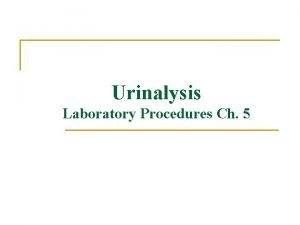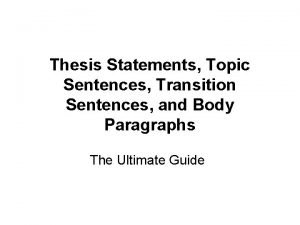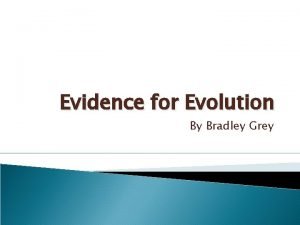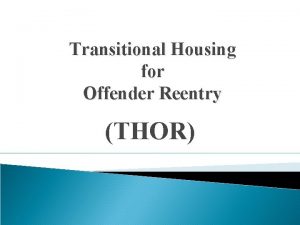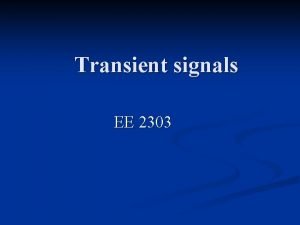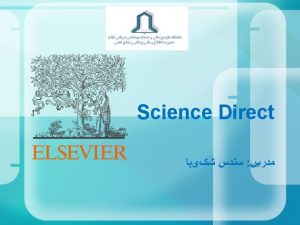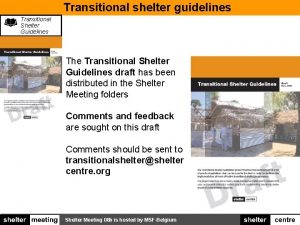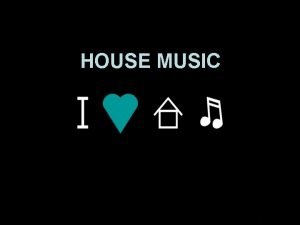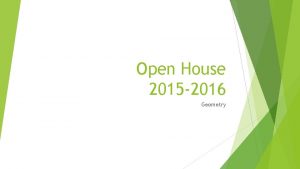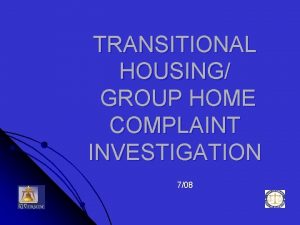Transitional Open House Thursday April 30 th 2015








- Slides: 8

Transitional Open House Thursday, April 30 th 2015

Objectives �To provide an overview of the Montessori program. �To illustrate similarities and differences across the grade levels. �To observe classrooms at all levels �To provide parent education

Physical Appearance of Classrooms PRIMARY • Child size furniture • Low shelves • Materials sequenced from top to bottom, left to right, simple to complex. • Work done at tables or work rugs • Aesthetically pleasing LOWER EL • Larger furniture • More tables • Less floor space to work Middle El • individual desk and work tables • Increased use of technology for individual work Upper El • Textbooks • Papers/Journals • Technology (individual devices)

Work Expectations PRIMARY • Complete a work cycle-get a rug, unroll the rug, choose a work, set up and complete the work, return to shelf, roll rug • 3 period lesson-(stage 1: naming, stage 2: recognition, stage 3 -recall) • No work plans • Kindergarten students give lessons to Prekindergarten students on materials they have mastered LOWER ELEMENTARY • Workplans -used as a daily tracker - provides choice -provides a sense of responsibility - teaches time management • Lessons and follow up work assigned according to ability level • Collaboration-opportunities to work with peers in all content areas MIDDLE ELEMENTARY • Increased expectations for student independence • Increased opportunities for group work and collaboration • Student managed weekly work plans UPPER ELEMENTARY • Weekly work plans-include current concepts being taught as well as a spiral review • Many opportunities for collaborationimportant for social development as well as academic development • Student conferences weekly

Use of Montessori Materials PRIMARY • 3 hour uninterrupted work cycle when students are using materials • Children clean up materials themselves and prepare for the next person • Children choose their own work based on lessons they have been given • Teacher gives small group, whole group, and individual lessons throughout the work cycle LOWER ELEMENTARY • Use of materials daily to teach Montessori curriculum and common core standards • Projects-vary by classroom • Practical life involves caring for the environment • No sensorial materials because students are past this stage of development MIDDLE ELEMENTARY • Materials used for more advanced lessons and conceptual understanding • Materials are used as a bridge from concrete representations to abstract work • Projects throughout the curriculum UPPER ELMENTARY • Create materials relevant to lessons • Use of materials may stretch over more than one day (2 nd period) • Projects throughout the curriculum

Grades/Testing/Report Cards PRIMARY • No formal testing for Pre. K students • Kindergarten students are assessed using MAPS, Reading 3 D and common assessments • Pre-K students receive only report cards • Kindergarten students receive 4 midquarter reports and 4 report cards • Kindergarten report cards are specific to Montessori curriculum and Common Core standards LOWER ELEMENTARY • Numeric report cards that focus on reporting proficiency • Report card reflects academic and social development • Midquarter reports • Assessments include MAPS and Reading 3 D MIDDLE ELEMENTARY • First year with letter grades • Letter grades are an average of student’s work rather than a teacher’s indication of ability • Assessments include MAPS (3 rd and 4 th) and Reading 3 D (3 rd only) • Common assessments are given each quarter in reading and math • EOG testing begins -3 rd grade-BOG and EOG in reading, EOG in math -4 th grade-EOG in reading and math UPPER ELEMENTARY • Powerschool is used for reporting grades to parents and students • Grading scale • Common assessments are given each quarter in reading, math, and science (5 th grade only) • EOG testing -5 th grade-reading, math, and science -6 th grade- reading and math

Other Topics PRIMARY • Grace and courtesy are a focus • Ground rules must be internalized • Importance of being still • Parent support is key-things to do at home to be successful (chores, routine, read, tell stories, expectations, parallel work, specific behaviors for specific places) • Independence LOWER ELEMENTARY • Increased student responsibility • Responsible for belonging • Responsible for putting on and taking off clothing and tying shoes • Increased expectations on being selffocused, independent learners who are intrinsically motivate • Volunteering in primary classrooms MIDDLE ELEMENTARY • Personal responsibility truly emphasized • Volunteering in classrooms throughout the school UPPER ELEMENTARY • Responsibility • Freedom • Leadership-Kids Voting, Read Across America, Safety Patrol, WHMM News • Volunteering in classrooms throughout the school

In Conclusion �Montessori curriculum includes math, language, and cultural studies �Peace Education begins in the Primary classroom and continues throughout all grade levels. �Grace and courtesy is introduced in Primary classrooms and develops among all grade levels.

